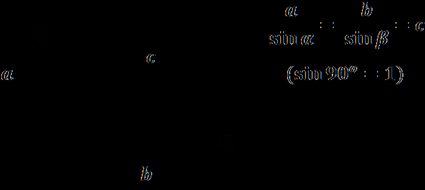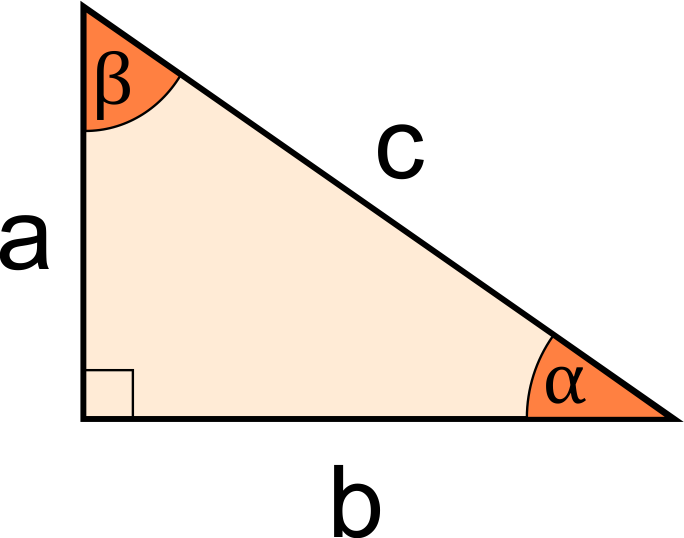How To Find The Side Of A Triangle Using Angles
Right Triangle Side and Angle Figurer
Created past Hanna Pamuła , PhD candidate
Reviewed by
Bogna Szyk and Jack Bowater
Final updated:
Nov 12, 2021
- How to discover the sides of a right triangle
- How to detect the angle of a right triangle
- How do you solve a right bending triangle with simply one side?
- How to find the missing side of a correct triangle? How to find the angle? Example
- FAQ
Finding out the missing side or angle couldn't be easier than with our peachy tool - correct triangle side and angle calculator. Choose ii given values, blazon them into the figurer and the remaining unknowns will exist determined in a glimmer of an eye! If you are wondering how to detect the missing side of a right triangle, continue scrolling and you'll find the formulas behind our calculator.
How to observe the sides of a correct triangle
At that place are a few methods of obtaining right triangle side lengths. Depending on what is given, you can use different relationships or laws to observe the missing side:
- Given two sides
If you know 2 other sides of the correct triangle, it's the easiest option; all yous need to practise is employ the Pythagorean theorem:
a² + b² = c²
-
if leg
ais the missing side, and so transform the equation to the form when a is on one side, and accept a square root:a = √(c² - b²) -
if leg
bis unknown, thenb = √(c² - a²) -
for hypotenuse c missing, the formula is
c = √(a² + b²)
- Given angle and hypotenuse

Apply the law of sines or trigonometry to discover the right triangle side lengths:
-
a = c * sin(α)ora = c * cos(β) -
b = c * sin(β)orb = c * cos(α)
- Given angle and one leg
Find the missing leg using trigonometric functions:
-
a = b * tan(α) -
b = a * tan(β)
- Given area and one leg
As nosotros retrieve from basic triangle area formula, we can summate the surface area by multiplying triangle superlative and base and dividing the effect by two. A correct triangle is a special example of a scalene triangle, in which ane leg is the height when the 2d leg is the base, then the equation gets simplified to:
area = a * b / two
For example, if we know just the correct triangle surface area and the length of the leg a, we can derive the equation for other sides:
-
b = 2 * area / a -
c = √(a² + (2 * area / a)²)
How to notice the angle of a right triangle
If you know 1 angle apart from the right angle, adding of the third 1 is a like shooting fish in a barrel:
Given β: α = ninety - β
Given α: β = 90 - α
However, if only ii sides of a triangle are given, finding the angles of a right triangle requires applying some basic trigonometric functions:
for α
-
sin(α) = a / csoα = arcsin(a / c)(changed sine) -
cos(α) = b / cand soα = arccos(b / c)(changed cosine) -
tan(α) = a / band soα = arctan(a / b)(inverse tangent) -
cot(α) = b / asoα = arccot(b / a)(inverse cotangent)
and for β
-
sin(β) = b / cthenβ = arcsin(b / c)(inverse sine) -
cos(β) = a / csoβ = arccos(a / c)(inverse cosine) -
tan(β) = b / asoβ = arctan(b / a)(inverse tangent) -
cot(β) = a / bsoβ = arccot(a / b)(inverse cotangent)
How do you solve a right angle triangle with only one side?
To solve a triangle with i side, you too need one of the non-correct angled angles. If not, it is impossible:
- If you accept the hypotenuse, multiply information technology past sin(θ) to go the length of the side reverse to the angle.
- Alternatively, multiply the hypotenuse by cos(θ) to become the side next to the angle.
- If you have the non-hypotenuse side next to the angle, split up it by cos(θ) to get the length of the hypotenuse.
- Alternatively, multiply this length by tan(θ) to get the length of the side opposite to the angle.
- If you lot accept an angle and the side reverse to it, yous can divide the side length by sin(θ) to get the hypotenuse.
- Alternatively, dissever the length past tan(θ) to become the length of the side next to the angle.
How to observe the missing side of a correct triangle? How to find the angle? Example
Let's show how to find the sides of a right triangle with this tool:
- Assume we want to find the missing side given area and one side. Select the proper selection from a drop-down listing. It's the third 1.
- Blazon in the given values. For instance, an surface area of a right triangle is equal to 28 in² and b = 9 in.
- Our right triangle side and angle calculator displays missing sides and angles! At present we know that:
- a = half-dozen.222 in
- c = x.941 in
- α = 34.66°
- β = 55.34°
Now, let'due south check how does finding angles of a correct triangle piece of work:
- Refresh the reckoner. Pick the selection you need. Assume that we have ii sides and we want to find all angles. The default option is the correct one.
- Enter the side lengths. Our right triangle has a hypotenuse equal to 13 in and a leg a = 5 in.
- Missing side and angles appear. In our example, b = 12 in, α = 67.38° and β = 22.62°.
FAQ
How many lines of symmetry does a right triangle accept?
If a correct triangle is isosceles (i.e., its two not-hypotenuse sides are the aforementioned length) it has one line of symmetry. Otherwise, the triangle will have no lines of symmetry.
Tin can a right angled triangle take equal sides?
No, a right triangle cannot have all 3 sides equal, every bit all three angles cannot as well exist equal, equally i has to exist 90° by definition. A right triangle tin, all the same, have its two non-hypotenuse sides be equal in length. This would also hateful the two other angles are equal to 45°.
Are all right triangles similar?
Not all right angled triangles are similar, although some can be. They are similar if all their angles are the aforementioned length, or if the ratio of 2 of their sides is the aforementioned.
Hanna Pamuła , PhD candidate

Source: https://www.omnicalculator.com/math/right-triangle-side-angle
Posted by: swansonpook1997.blogspot.com


0 Response to "How To Find The Side Of A Triangle Using Angles"
Post a Comment